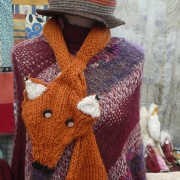Health, fabrics and leathers
The associations Federconsumatori Piemonte and Tessile & Salute have created a small survey to find out the awareness of consumers about buying products made from fabrics and leathers. The main goal was to understand if, for consumers, there may be a relationship between textiles and leathers and health.
The questionnaire was divided into 4 sections.
Through the survey on the perception of quality we wanted to understand if, for our sample, the origin of a product is important and if they consider that the controls on the quality of the fabrics are sufficient, if they have the habit of reading label, and if they know the different codes used for both tissue composition and for the washing instructions.
The results show that 63% of the sample checks the provenance (often or always), the remaining 37% doesn’t.
With the same diversity of point of view of those who see the glass half empty or half full, we can be satisfied with the result, or to consider that almost 40% have no sensitivity with respect to the origin of the product.
Very similar result concerns the labeling, which appears to be an important indicator for the 76% of the sample compared with 24% claiming to read it rarely (sometimes or never).
The marks indicate that the fibers that make up a tissue are known by 41% of the sample, it knows only some 34%, and 25% say they do not know them. It goes a bit better for the abbreviations used in the markings on the correct wash, but 31.5% say they do not know them all. Finally only 23% of our sample said there are sufficient control on quality.
With the investigation of the composition of the tissues we want to know if the consumer distinguishes a leather from one made of synthetic and natural fibers and if he considers that there are differences between the two types. About 90% of those surveyed were aware of these differences, but when it comes to recognizing this difference to the touch, percentages decrease: about 60% acknowledge the natural fabrics from synthetic ones, and only 53% say they recognize the difference to the touch.
70% of respondents also say they know the materials most commonly used for the production of clothing.
The area devoted to patterns and buying criteria was aimed to investigate aspects of the decision-making process such as the consideration of the quality / price ratio. In addition, it also wanted to understand the behavior of the consumers compared to the price: if they were interested in the research “opportunity” during the sales or purchasing in the outlets, and their willingness to spend more to get more information on the traceability of the product. Finally, we wanted to know if fashion influenced the purchase.
For 70% of respondents the price is always / often a determining factor in the choice, many (80%) consider the criteria for purchasing the duration of the leaders and more than 55% buy on sale or at outlets. Over 90% of the sample is still available states to spend more money in exchange for greater product traceability.
Compared to an interest in fashion, the surveyed population is a rather less divided: about 41% say they follow always / often the fashion, over 42% say they follow the dictates sometimes, the rest claims to never do it.
The last area of inquiry concerned the relationship between fabrics / leathers and health, relationship known by almost all (97%) of our respondents as well as almost all (95%) considered it possible that the tissues may generate an allergic reaction, while it is lower the awareness with respect to the possible reaction with the leather (87%).
In addition, 44% of respondents has suffered from skin irritation due to a tissue.
CONCLUSION
In recent years, we have seen an increased attention to alimentation and we believe that this is right, but there are also other phenomena that need to be the center of attention of consumers. There are sectors which are often underestimated, as is the case for textiles, leather, tricks and so on. All the sector intended to clothing, accessories, as well as the neighboring sector for the destination of use of the cosmetic, is greatly underestimated from the point of view of safety, both by consumers and by the legislature



Leave a Reply
Want to join the discussion?Feel free to contribute!